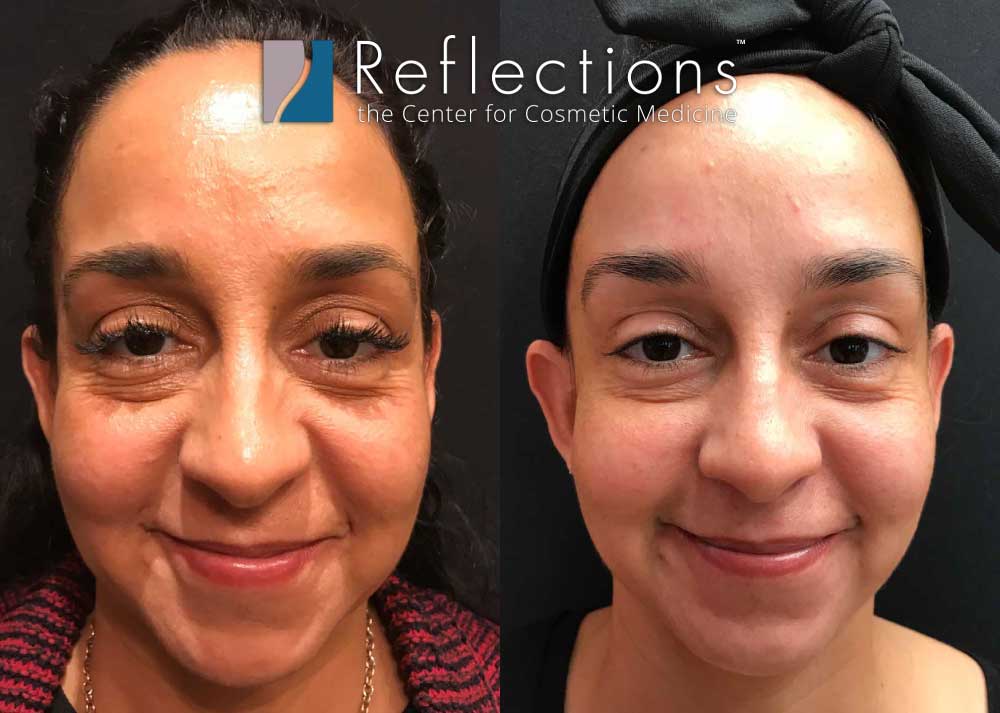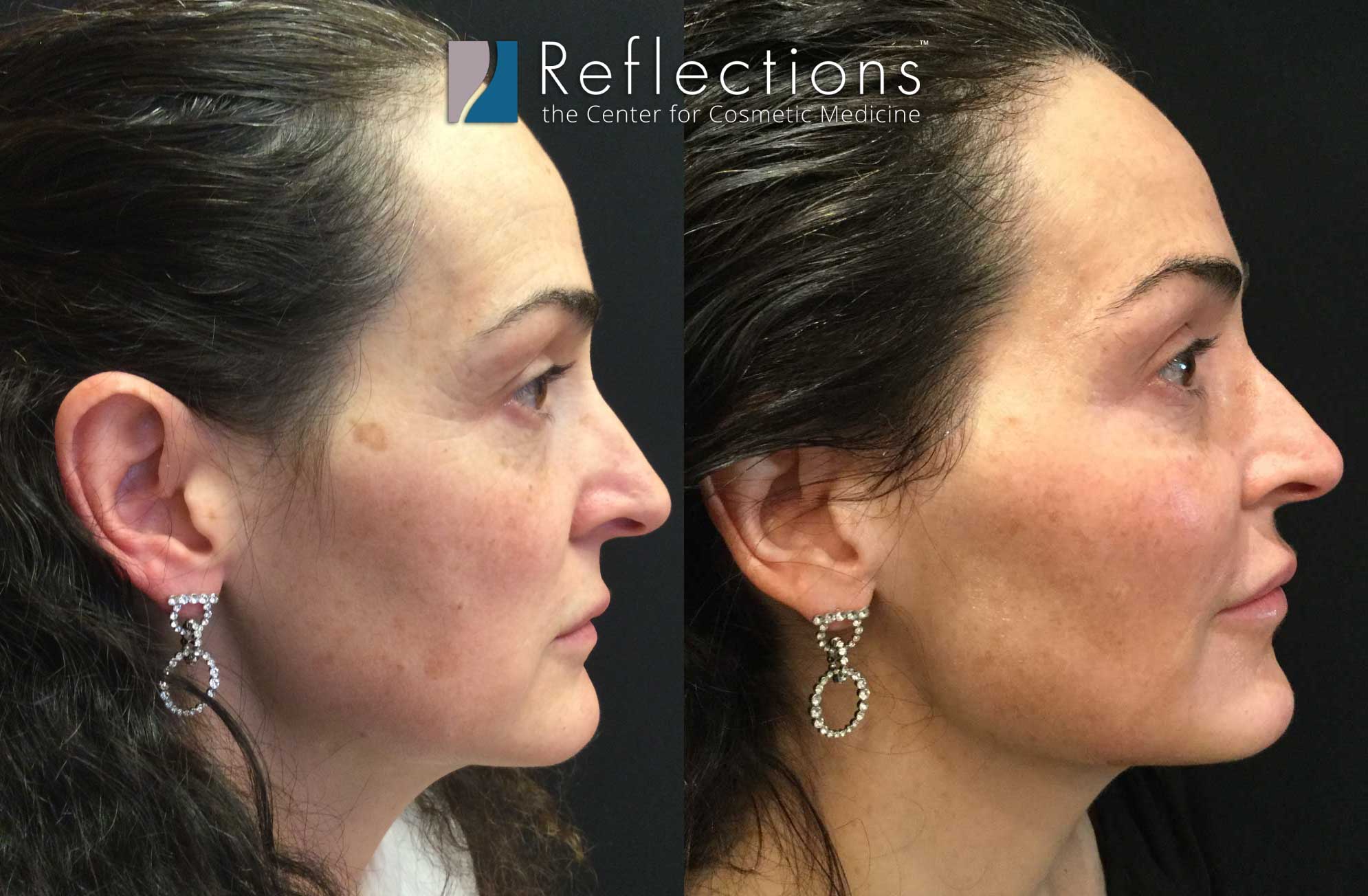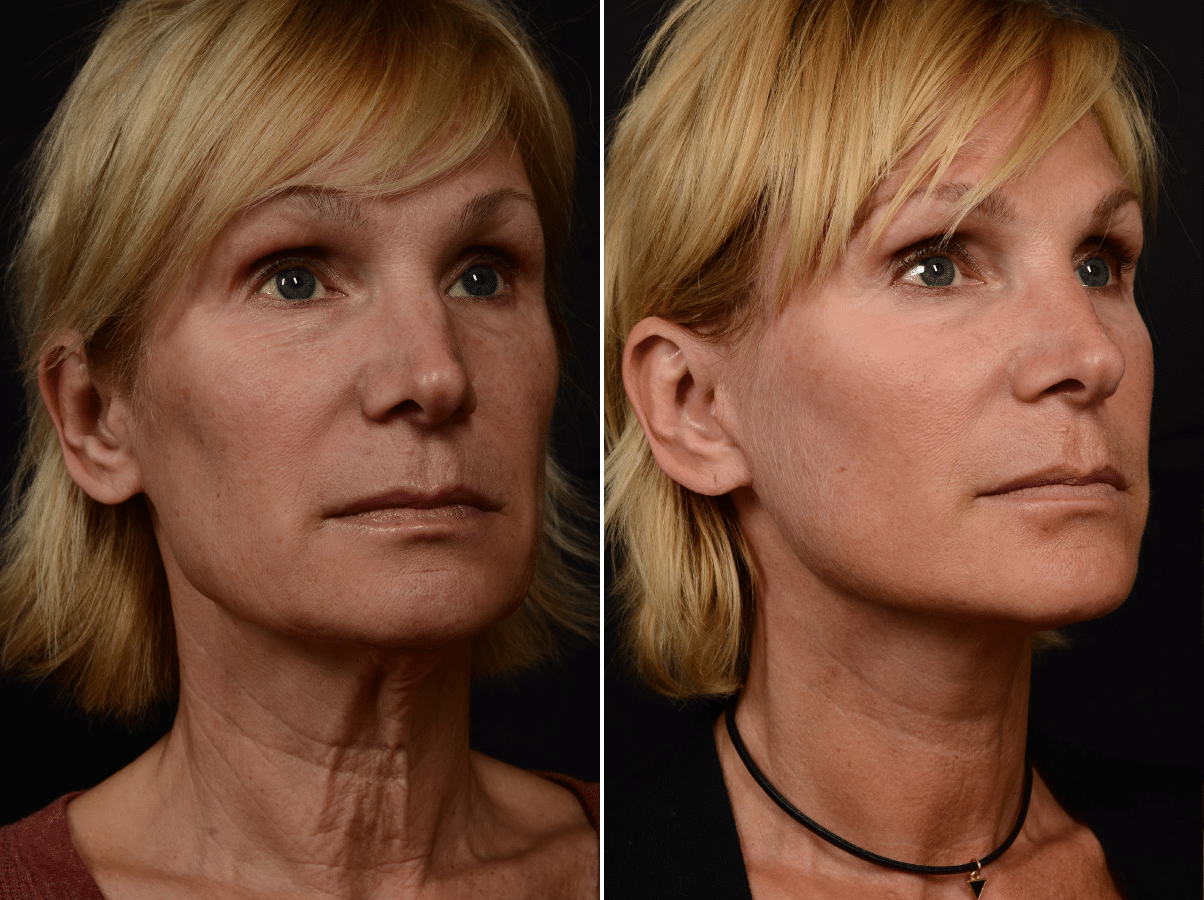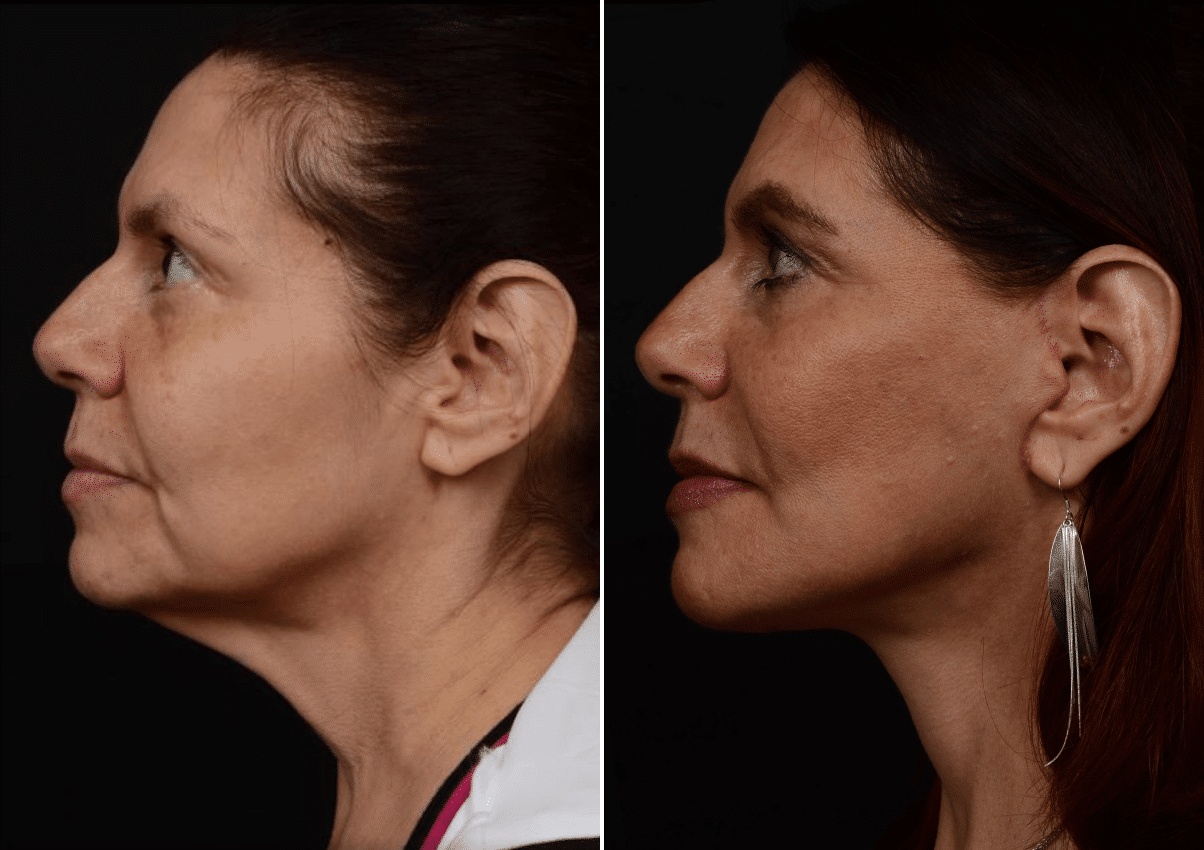Some people want fuller, higher “cheekbones” than they were born with, but most people who want to improve their cheeks are simply seeking to replace what time has stolen from them. You see, as we age, or even diet, we all lose some of the normal fat volume throughout our faces. Then, our skin starts to sag, and fat slides down the face and accumulates in the jowls, weighing on the skin even more, and making our under eye hollows more pronounced. Our bones start to lose volume as well, and the ligaments in our faces start to lose elasticity and droop. Weight fluctuations as well as certain medical conditions and prescription medications can speed up this process.
Top Asked Questions About Cheeks
- What causes cheeks to drop?
For all of us, our cheeks will drop with age. This is due to complex changes within the fat, skin, and underlying bone and musculature in our faces. Weight fluctuations as well as certain medical conditions (and prescription medications) can speed this process. The first noticeable flattening and drooping of the cheeks tends to appear in women in their 30's or 40's, and is very pronounced by the time they reach their late 50's. For men, who tend to have less round cheeks to begin with, the change tends to appear more slowly. These early changes in women are due mostly to loss of fat in the "cheekbone" area, which is why adding filler there to replace that volume has become so popular.
- How can I get full cheeks?
Filler is the most popular cheek filling treatment, by far. Because women lose fat in their cheeks starting in their 30's, replacing this lost fat with either dermal fillers or with fat transfer (your own fat, taken from your midsection and injected into your cheeks) are two ways to create very natural results. For some, the cheek may droop more than it loses volume, and in that case, a thread lift can lift the cheeks for a more youthful contour. Of course, both filler and a thread lift can be done at the same time, for enhanced results, in patients who may need both lift and volume. There are many other treatments we offer for cheeks - these 2 are the most common, though, for those seeking fuller cheeks.
- How can I lift my saggy cheeks?
Sagging cheeks are generally caused by complex age-related changes in the face. To correct that, and lift sagging cheeks, usually requires some combination of:
- Adding Volume with Hyaluronic Acid Filler or Fat Transfer to Replace Lost Fat Pads
- Tightening & Firming Skin with a Technology (Ulthera, ThermiTight, ThermiSmooth, Sofwave, Thermage, PrecisionTX) or a Biostimulatory Filler (Hyperdilute Radiesse or Sculptra)
- Lifting Loose Skin with Thread Lifts or a Facelift Surgery
- Adding Volume to Replace Lost Bone Volume with Hyaluronic Acid Filler or Radiesse
- How can I tighten my cheek muscles?
Contrary to all of those face yoga videos you'll find on YouTube, tightening muscles cannot be done by strengthening them - although stronger muscles are necessarily larger muscles. So while it may be possible to contour your face shape using exercises, you cannot get a face lift (that goes muscle-deep) with anything other than a face lift surgery, at this time.
- How can I tighten my skin naturally?
It depends upon your definition of "naturally"..... If you mean without using any foreign substances in your body, then you might consider using your own fat to replace the fat that's naturally lost from the "apples of the cheeks" as we age (this is called fat transfer). If you mean without using any foreign substances in your body, without surgery and without needles, then you might consider a laser treatment, or a skin tightening treatment like Ulthera, Sofwave, or Thermage. If you mean without using any foreign substances in your body, without surgery and without needles, and without having any treatments performed then you won't be able to achieve tightening, but you can prevent a lot of sagging and age much better if you'll commit to retin-A and sunscreen daily.
Natural-Looking, Full, Lifted Cheeks

Fat Loss in the Cheek
Loss of fat in the upper cheeks happens fast through our late-30’s to mid-60’s. It’s part of the natural aging process for us all, but it can also happen sooner and faster if we lose a significant amount of weight, or from certain illnesses that cause what’s called “facial wasting.” When we lose this fat in our upper cheeks, the face deflates, almost like a balloon, and everything falls forward and downward, creating deep wrinkles and folds. This is the main culprit behind flat sagging cheeks, deep smile lines, jowls, and jawline laxity. As this process continues, you’ll start to see a depression form from the inner corner of the eye, down across the cheek (called the nasojugal groove), marked in white on the patient’s face.

Loss of Skin Elasticity (Sagging Loose Skin)
Part of the loose skin problem in our mid-faces is certainly just a deflation issue – and for a time, replacing that lost volume will solve all of your loose skin issues (think of reinflating a balloon).
But, given time, the skin starts to lose its elasticity (collagen and elastin starts to decrease) and repeated motions turn fine lines into wrinkles and deep folds. This is the point at which filling the face to remove all wrinkles starts to look unnatural – and because we would never overfill you, this is often the point at which patients start to notice their filler appointments aren’t getting them the results they once did.
While your still in the fine lines and wrinkles stages, non-surgical treatments can be used to tighten, firm, and even lift sagging skin in the cheeks. These treatments include technologies like Sofwave and Ulthera, and thread lifts.
As you age, these treatments will be able to offer less and less of a result, as your skin and other tissues just relax beyond what these treatments can improve significantly. At that point, surgery may become your preferred option, as it offers more dramatic results.
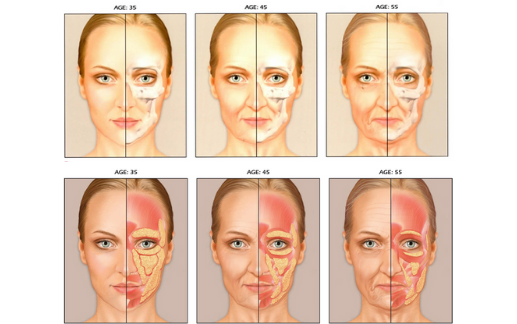
Bone Loss, Muscle & Tendon Laxity
As we age, we do lose bone volume, some muscles atrophy while others overcompensate, and tendons that hold everything in place when we’re young loosen and relax.
For the loss of bone volume, really only very firm fillers can mimic that in a natural-looking way. Radiesse and Voluma are really the top choices here. Occasionally Lyft is also used.
Muscle Laxity, separations, and tendon laxity are really best-treated by surgical correction provided in a facelift. Moderate changes to these can be done in the NvLift, a SMAS-focused facelift that’s performed under local anesthesia. More severe and deep corrections require general anesthesia and a deep plane facelift approach. Our board certified plastic surgeon, Dr. Fodero, has over 20 years of experience performing both of these techniques, and will be happy to guide your decision-making process.
If surgery is absolutely not for you, Ultherapy’s deepest settings do offer slight tightening at the muscle level. Now, it’s important for you to know this is the setting that gave Ultherapy a reputation as an uncomfortable procedure. We do offer ProNox nitrous mix for this treatment, but we think you deserve to be fully warned in advance, because unfortunately many patients cannot tolerate this treatment, and if we don’t complete the treatment, we cannot expect the results.
Treatments Available for Cheek Augmentation
The first step towards correcting this loss of normal fat volume in the upper cheeks is to add volume back in, either using your own fat, or with dermal fillers.
The most common dermal fillers used to restore the cheek’s volume are Lyft, Voluma, Defyne, Refyne, Vollure, Radiesse, and Sculptra, though there are cases where other fillers would be more appropriate.
Hyaluronic Acid Dermal Fillers
Dermal fillers offer instant results with a series of simple injections.
Lyft and Voluma are very similar fillers, each made by a different top manufacturer. They are cross-linked hyaluronic acid that offers a bouncy, natural lift in the cheek, and are well-known are the best lifting fillers on the market.
Vollure, Defyne, and Refyne are cohesive gel fillers (made by those same 2 top manufacturers of filler, Allergan and Galderma). These are a newer formulation of HA fillers, and their gel composition allows them to bend and move with the face very naturally, and to last longer in areas of high movement. They don’t offer as much lift, though, which most cheeks do need – so they’re most often layered over top of Voluma or Lyft.
Occasionally, an individual may need something else for their specific goals or anatomy, and in that case, our doctors who do all of our filler injections will be happy to explain their selection.
Biostimulatory Dermal Fillers
Other dermal filler options include Radiesse and Sculptra.
Radiesse is made of tiny calcium-based microspheres suspended in a gel. This offers immediate plumping, and in the long-term your body responds to these calcium particles by building new collagen.
Sculptra works similarly, using the same material as dissolving sutures in a liquid form, to stimulate collagen growth. However, Sculptra doesn’t offer the immediate results of these other filler options, but creates the longest-lasting results. Some patients prefer this because it’s a very under-the-radar approach, and others will combine Sculptra with hyaluronic acid fillers to see a faster result.
It’s important to realize only surgery can give surgical lifting results, but thread lifts are the next most-effective for lifting, and non-surgical, non-invasive (no needles or downtime) skin tightening treatments offer the best prevention and maintenance options and can provide an improvement that those who wish to avoid surgery may appreciate.
Thread Lifts
When skin laxity (looseness) is a major concern for cheeks, lifting threads can offer immediate results plus collagen stimulation which helps firm and lift the skin in the long-term. These dissolving thread lifts by NOVA or MINT and Silhouette InstaLift are a perfect stepping stone procedure for those not quite ready for surgical intervention, or for those who cannot take the recovery time off for a surgical procedure. Because results are immediate and there’s very little downtime, these lifting threads are a big hit among mothers-of-the-bride and other patients with big events they need to look their best for in a hurry.
NvLift Surgery (Facelift Surgery)
When the cause of cheek deflation has grown beyond fat and skin and has started to incorporate sagging and loose muscles, a facelift becomes the only option to fully correct the damage of aging. Our board-certified plastic surgeon, performs facelifts under local anesthesia, for increased safety, shorter and easier recovery, and better results than general anesthesia can offer. This procedure first tightens the muscles, then lifts the fat pads back into their optimal positions, and finally drapes the skin back for a natural result that’s never too tight.
Skin Tightening, Lifting, & Firming Non-Surgical Treatments
When it comes to lifting, firming, and tightening the cheeks without surgery, our two favorite technologies are Ultherapy and Sofwave – and patients who wish to see the most improvement tend to combine the two into one treatment. More info on why you’d want to combine Ulthera and Sofwave can be found in this blog.
Thermage has proven to be less effective than Ulthera and Sofwave, as has Exilis Ultra and ThermiSmooth, for this particular treatment area. We do have and use these treatments, but each technology has its best uses, and the cheeks require profound treatment to lift and firm, and for that it seems Ultrasound technologies (Ultherapy and Sofwave) are currently the best.

View More Cheek Treatment Before & Afters
More Before & Afters

The Perfect Cheeks at Reflections
At Reflections, we understand that each of our patients is completely unique. No two people check all of the same boxes for their skin type, the type of procedure they want, treatment goals, lifestyle, budget, etc. That’s why we offer so many different treatments option – you shouldn’t have to settle. Your journey starts with a free consultation with one of our physicians.
Everyone Will Notice but No One Will Know!
Have a big wedding or reunion coming up? Whatever your reason for wanting to look red-carpet-ready, we’re here to help. Our natural approach to beauty highlights and maintains your natural beauty and the features you love most so you’ll still look like you, only better! We can help you look your very best with looks so natural, that even your husband won’t know it was a medspa result! You’ll only get those kinds of A-List Options at New Jersey’s Best Med Spa, where only doctors perform cheek treatments, no matter whether they are surgical or non-surgical.
Frequently Asked Questions About Cheek Treatment
- Why are my cheeks sagging?
The cheeks first start to sag for women as they lose fat volume in the apple of their cheeks (or the section of their cheekbone area closest to the nose). This is a very normal aspect of aging that all women experience – usually between ages 33 and 50. During this same time period, skin loses some of its firmness and elasticity due to collagen loss, making the skin more likely to develop fine lines and wrinkles, and a droopy appearance. Finally, we lose bone mass as we age, and our muscles often sag with gravity in our faces – these changes are usually visible further down the aging process, in the late 40’s to mid-60’s.
- What age do cheeks start to sag?
Many women notice their cheeks flatten in their mid-to-late 30’s. As the cheek deflates it starts to sag, and this will worsen if left untreated. By your late 40’s, most women have early jowling, which occurs because of volume loss in the cheek above (which is why cheek filler can actually remove jowls for women in their 40’s and 50’s).
- Is cheek augmentation permanent?
It can be, if it’s done with fat transfer. It’s not permanent if it’s done with Hyaluronic Acid fillers, like Voluma or Lyft, or even if it’s done with more permanent fillers, like Sculptra or Radiesse, which do eventually fade over many years to decades.
Fat transfer is the surgical removal of fat from one part of your body, and transfer to another. In this treatment, we usually take fat from your midsection, and a plastic surgeon uses it to precisely fill and sculpt your face, for a very natural and permanent result.

Blog
Filler Proportions for Different Races: Looking Natural is in the Details!
What Makes Filler Look Natural? We all know “bad filler” when we see it,...
Read More
Blog
Thread Lifts vs. Fillers: Which Should You Choose?
Both thread lifts and dermal fillers are non-surgical options for signs of...
Read More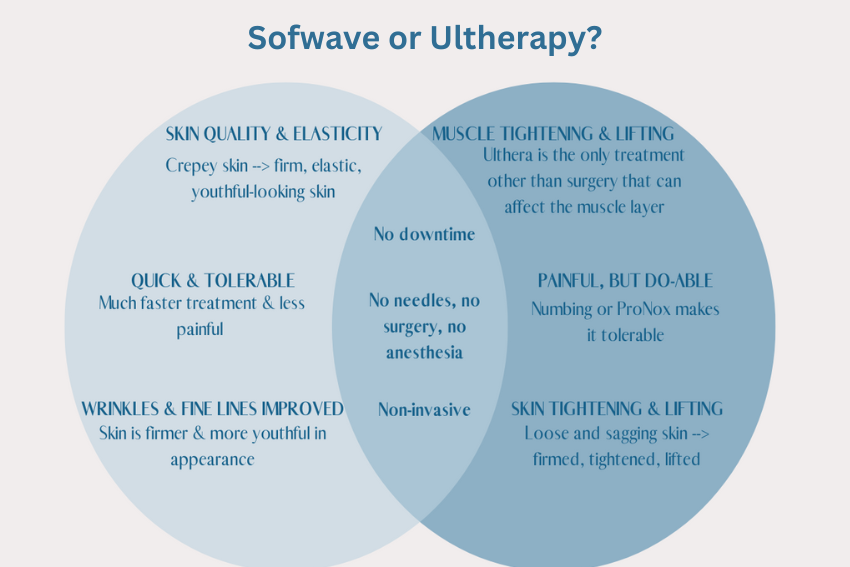
Blog
Ultherapy vs. Sofwave: HIFU Treatments Compared
Ultherapy has long been one of the top-awarded non-surgical facelift treatment...
Read MoreSchedule Your Free Consultation
With One Of Our Physicians
Schedule Now

Dr. Mitchell Chasin is a Cosmetic & Laser Physician at Reflections Center. Dr. Chasin believes strongly that the best cosmetic physicians are those who are dedicated to mastering their craft through continuing education and collaboration with the industry’s top doctors.




